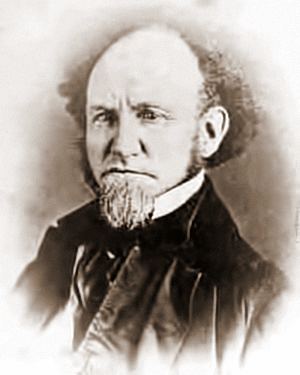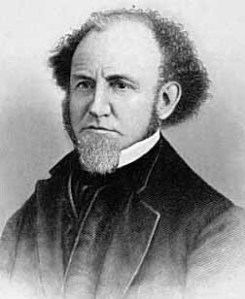Rank Colonel, U.S.V. Role Geologist Name Charles Whittlesey | Signature | |
 | ||
Battles/wars American Civil WarBattle of Rich MountainBattle of Fort DonelsonBattle of Shiloh Battles and wars Allegiance United States of America, Union Books Early History of Clevelan, Early History of Clevelan, Fugitive Essays - Upon Inte, Early History of Cleveland, Fugitive Essays - Upon Inte | ||
What major charles whittlesey thinks of your lame ass excuse
Charles Whittlesey (born Southington, Connecticut, 4 October 1808; died Cleveland, Ohio, 18 October 1886) was a soldier, geologist and an investigator of mounds relics of the United States. He is described by Ephraim George Squier and Edwin Hamilton Davis, in their book Ancient Monuments of the Mississippi Valley, as a "zealous investigator," in the field of "American antiquarian research."
Contents

Biography
Whittlesey graduated from the United States Military Academy in 1831, and was assigned to the 5th infantry. In 1832 he was stationed at Fort Howard, Wisconsin, and, after serving in the Black Hawk War, he resigned on 30 September of the same year. After studying law, he followed that profession in Cleveland, and from 1836 to 1837, he was editorially connected with the Cleveland Herald.
In 1837 he was appointed assistant geologist of Ohio, under William W. Mather, and given charge of the topographical and mathematical parts of that survey, which disclosed the rich coal and iron deposits of eastern Ohio that are the foundation of its manufacturing industries. At this time, he also carefully examined and measured several of the works of the mound builders, and his plans and notes of twenty of these remains were embodied in Edwin Hamilton Davis and E. G. Squier's Ancient Monuments of the Mississippi Valley.
From 1847 until 1851 he was engaged by the U. S. government in making a mineralogical and geological survey of the region about Lake Superior and the upper Mississippi. Subsequently, he was professionally engaged as a mining engineer in Michigan, Wisconsin, and Minnesota, and in 1858 became associated in the geological work of the survey of Wisconsin. In February 1861, he was enrolled in a company that tendered its services to Gen. Winfield Scott to escort the president-elect, Abraham Lincoln, to Washington.
He was made assistant quartermaster general on the staff of the governor of Ohio on 17 April 1861, and during the Western Virginia Campaign acted as chief engineer of the Ohio troops. At the expiration of his three-months' service he was appointed, on 15 August 1861, colonel of the 20th Ohio Infantry, and detailed as chief engineer of the Department of the Ohio, with charge of planning and constructing the defenses of Cincinnati. He was present at Fort Donelson, where he led his regiment, and after the surrender was sent to the north in charge of over 10,000 prisoners. At the Battle of Shiloh he commanded the 3rd brigade of Maj. Gen. Lewis Wallace's division, but failing health compelled his retirement from active service, and he resigned on 19 April 1862. Whittlesey returned to service in September 1862, serving on Maj. Gen. Wallace's staff providing assistance directing civilian and military labor for the Defense of Cincinnati. Following the Confederate threat to Cincinnati, Whittlesey again returned to civilian life.
He then resumed the geological exploration in the Lake Superior and upper Mississippi basin, and continued his literary labors. In 1867 he was active in the founding of the Western Reserve and Northern Ohio Historical Society, of which he was president until his death in 1886. He was elected a member of the American Antiquarian Society in 1870.
Works
His bibliography included about 200 titles. In addition to his reports for the geological surveys, he published in the “Smithsonian Contributions”:
He is also the author of:
